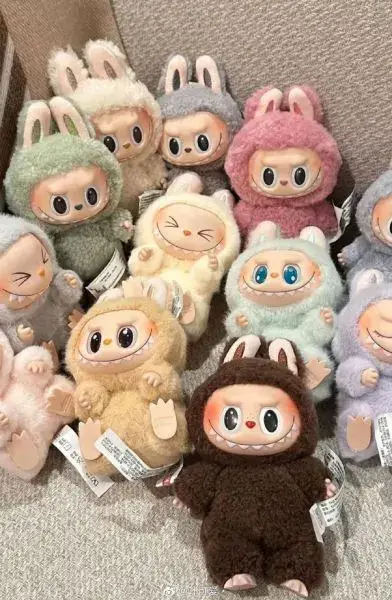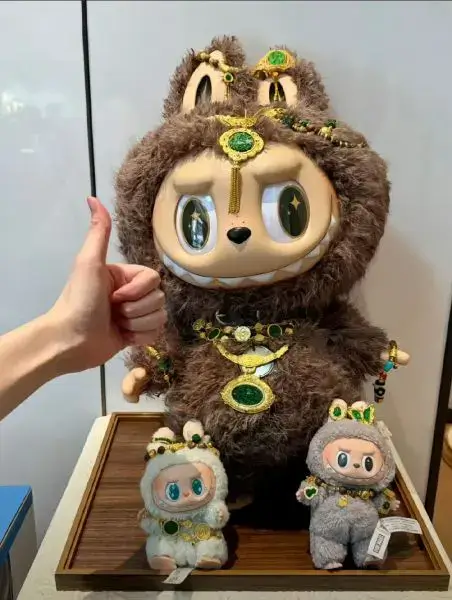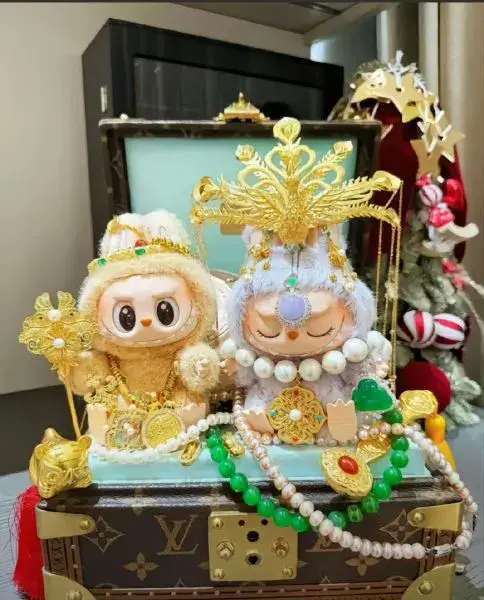The debate around Labubu’s look is really a modern experiment in consumer culture focused on “ugly-cute” aesthetics. With its sharp teeth, uneven eyes, and messy hair, Labubu breaks away from the usual sweet and cute toy style. Instead, it captures the emotional needs of today’s youth, becoming a unique cultural phenomenon.
A Visual Shift: From “Perfect Beauty” to “Imperfect Charm”
Labubu has jagged teeth, mismatched eyes, and uneven limbs. It goes against the smooth, cute style of most collectible toys and creates a kind of “dark fairytale” look. This rebellious style mixes the wildness of Norse myths (like elves) with the strange creatures of old Chinese folklore (like Song dynasty mud toys). Its rough textures and exaggerated features give off a raw, lively energy. It’s not about looking pretty – it’s about feeling real in an imperfect way. Many fans say Labubu looks like “what stress feels like on the inside”.

Emotional Symbol: A Group Rebellion Against “Being Good”
Young people see Labubu as a symbol of not wanting to behave or “act nice”.
Identity marker: Owning rare Labubu figures becomes a kind of social badge. Some rare versions are resold for more than 20 times their original price, turning them into social currency.
Emotional outlet: Its eye rolls and mischievous smile reflect workplace frustration. Some fans even modify them – adding tear stains or scars – to show their personal struggles.
Healing through play: The excitement of opening blind boxes raises dopamine levels by 37%. 79% of buyers say Labubu’s “weirdness” feels more comforting than a perfect-looking toy.

Commercial Alchemy: From Toy to Financial Asset
Pop Mart drives obsession through three key strategies.
Blind box “mystery”: Rare figures with a 1-in-144 chance tap into gambling instincts. Collaborations with brands like Disney or Balenciaga can resell for over 47 times the original price.
Localized global designs: Special editions, like a Thai gold-robe Labubu or a Singapore Merlion version, create cultural blends – boosted by celebrity sightings (Lisa and Rihanna, etc).
Resale market control: A mint-green Labubu once sold for 1.08 million RMB (~$150,000). Scalpers use bots to grab 70% of new releases, creating a cycle where fans, resellers, and the brand all play a part in driving up demand.

Cultural Conflict: Rethinking Value in the Debate
Supporters see it as a kind of “ugly-cute rights movement” that breaks the old beauty standards – comparable to how Song dynasty mud toys challenged norms 1,000 years ago. Critics argue it’s a “fake aesthetic” created by capitalism. Cheap copies from Yiwu cost only 38 RMB compared to the original’s 99 RMB, with no quality difference – suggesting a bubble like the Beanie Babies crash in the 1990s.
Cultural exportation issues: Though international media call Labubu “China’s Hello Kitty”, its Nordic-inspired design has sparked concerns about losing Chinese cultural identity. Some scholars say it needs stronger local roots.
In the end, Labubu shows a deeper tension in modern society. Young people use “ugly-cute” toys to rebel against polished beauty standards, but at the same time, they get pulled into new rules created by the market. As one fan put it: “Even if Labubu is ugly, someone will still love it. Maybe that’s our gentle rebellion against a boring life.” Whether Labubu becomes a lasting cultural icon depends on whether it can grow beyond just being a short-term emotional trend.








